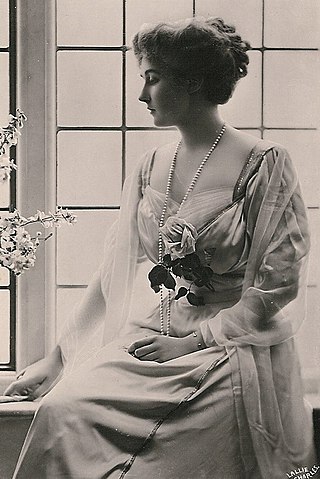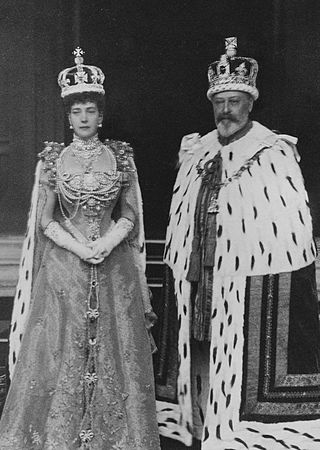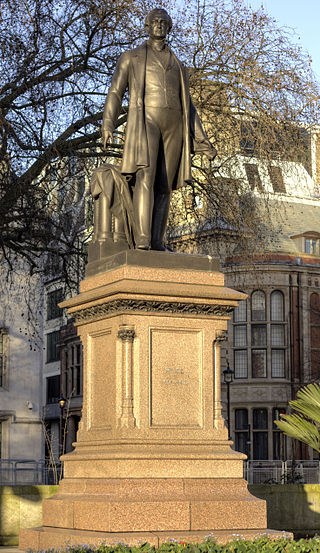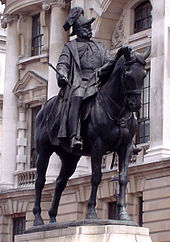
Prince Arthur, Duke of Connaught and Strathearn, was the seventh child and third son of Queen Victoria of the United Kingdom and Prince Albert of Saxe-Coburg and Gotha. He served as Governor General of Canada, the tenth since Canadian Confederation and the only British prince to do so.

Prince Arthur of Connaught was a British military officer and a grandson of Queen Victoria. He served as Governor-General of the Union of South Africa from 20 November 1920 to 21 January 1924.

Lady Victoria Patricia Helena Elizabeth Ramsay was a granddaughter of Queen Victoria. Upon her marriage to Alexander Ramsay, she relinquished her title of a British princess and the style of Royal Highness.

Alastair Arthur Windsor, 2nd Duke of Connaught and Strathearn was a member of the British Royal Family. He was the only child of Prince Arthur of Connaught and Princess Alexandra, 2nd Duchess of Fife. He was a great-grandson of Queen Victoria through his father and the first great-grandchild of Edward VII through his mother. He was also a descendant of Victoria's paternal uncle and predecessor, William IV, through an illegitimate line.

Clarence House is a royal residence on The Mall in the City of Westminster, London. It was built in 1825–1827, adjacent to St James's Palace, for the royal Duke of Clarence, the future king William IV.

Statue Square is a public pedestrian square in Central, Hong Kong. Built entirely on reclaimed land at the end of the 19th century, Statue Square consists of two parts separated by Chater Road into a northern and a southern section. It is bordered by Connaught Road Central in the north and by Des Voeux Road Central in the south.

Princess Louise Margaret of Prussia, later Duchess of Connaught and Strathearn VA CI RRC DStJ, was a member of the House of Hohenzollern and of the British royal family. She served as the viceregal consort of Canada while her husband, Prince Arthur, Duke of Connaught and Strathearn, served as the governor general, from 1911 to 1916.

Earl or Mormaer of Strathearn is a title of Scottish nobility, referring to the region of Strathearn in southern Perthshire. Of unknown origin, the mormaers are attested for the first time in a document perhaps dating to 1115. The first known mormaer, Malise I, is mentioned by Ailred of Rievaulx as leading native Scots in the company of King David at the Battle of the Standard, 1138. The last ruler of the Strathearn line was Malise, also Earl of Caithness and Orkney, who had his earldom forfeited by King Edward Balliol. In 1344 it was regranted by King David to Maurice de Moravia, a royal favourite who had a vague claim to the earldom as Malise's nephew and also stepfather.

The Victoria Memorial is a monument to Queen Victoria, located at the end of The Mall in London by the sculptor (Sir) Thomas Brock. Designed in 1901, it was unveiled on 16 May 1911, though it was not completed until 1924. It was the centrepiece of an ambitious urban planning scheme, which included the creation of the Queen’s Gardens to a design by Sir Aston Webb, and the refacing of Buckingham Palace by the same architect.
A Royal Fellow of the Royal Society is a member of the British royal family who has been elected a Fellow of the Royal Society. The council of the Royal Society recommends members of the Royal Family to be elected and then the existing Fellows vote by a secret ballot whether to accept them. The ballots have only a box to tick supporting the measure; those opposing have to write "no" or otherwise mark or spoil the paper. As of 2022 the Patron was Queen Elizabeth II, and Royal Fellows were:

The Golden Jubilee of Queen Victoria was celebrated on 20 and 21 June 1887 to mark the 50th anniversary of Queen Victoria's accession on 20 June 1837. It was celebrated with a Thanksgiving Service at Westminster Abbey, and a banquet to which 50 European kings and princes were invited.

St George's Chapel at Windsor Castle in England is a castle chapel built in the late-medieval Perpendicular Gothic style. It is a Royal Peculiar, and the Chapel of the Order of the Garter. St George's Chapel was founded in the 14th century by King Edward III and extensively enlarged in the late 15th century. It is located in the Lower Ward of the castle.

The statue of George V in Old Palace Yard, Westminster, London, is a sculpture of George V, King of the United Kingdom and the British Dominions, and Emperor of India. The statue was sculpted prior to the Second World War and was hidden in a quarry during the war years. Other locations were suggested for the statue, including Parliament Square, but it was unveiled opposite the House of Lords in 1947.

The coronation of Edward VII and his wife, Alexandra, as king and queen of the United Kingdom and the British Dominions took place at Westminster Abbey, London, on 9 August 1902. Originally scheduled for 26 June of that year, the ceremony had been postponed at very short notice, because the King had been taken ill with an abdominal abscess that required immediate surgery. In contrast to the coronation of Queen Victoria, Edward's predecessor, some 64 years earlier, Edward and Alexandra's coronation had been carefully planned as a spectacle reflecting the influence and culture of the British Empire, then at the height of its power, but also as a meaningful religious occasion.

A bronze statue of Captain James Cook by Thomas Brock is located near Admiralty Arch on the south side of The Mall in London, United Kingdom. The statue was completed in 1914 and is maintained by The Royal Parks. It is mounted on a stone plinth.

The London Troops War Memorial, located in front of the Royal Exchange in the City of London, commemorates the men of London who fought in World War I and World War II.

The statue of Robert Peel in Parliament Square, London, is a bronze sculpture of Sir Robert Peel, a former Prime Minister of the United Kingdom. It was sculpted by Matthew Noble and was one of the first three statues to be placed in the square.

The Emmeline and Christabel Pankhurst Memorial is a memorial in London to Emmeline Pankhurst and her daughter Christabel, two of the foremost British suffragettes. It stands at the entrance to Victoria Tower Gardens, south of Victoria Tower at the southwest corner of the Palace of Westminster. Its main feature is a bronze statue of Emmeline Pankhurst by Arthur George Walker, unveiled in 1930. In 1958 the statue was relocated to its current site and the bronze reliefs commemorating Christabel Pankhurst were added.

The state funeral of George V, King of the United Kingdom of Great Britain and Ireland and Emperor of India, occurred on 28 January 1936 at St George's Chapel, Windsor Castle, following his death on 20 January and subsequent lying in state at Westminster Hall.





















